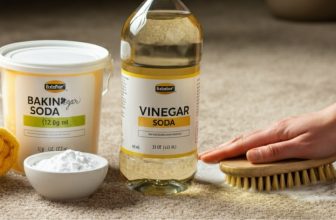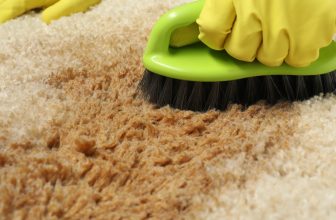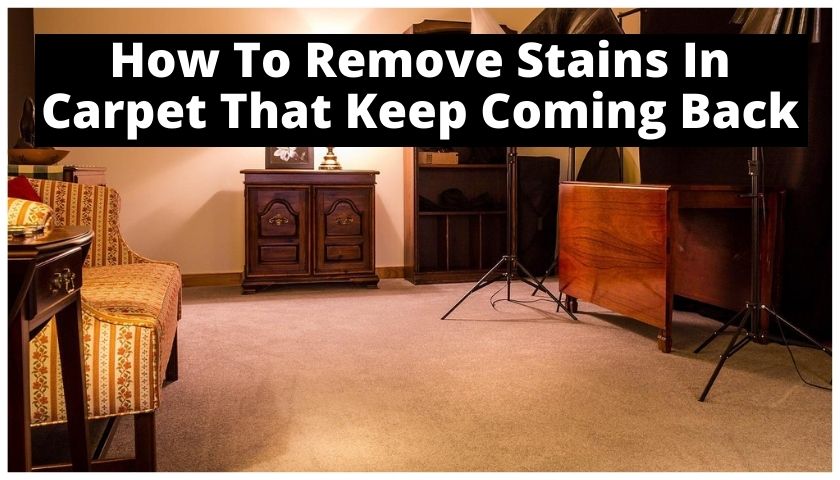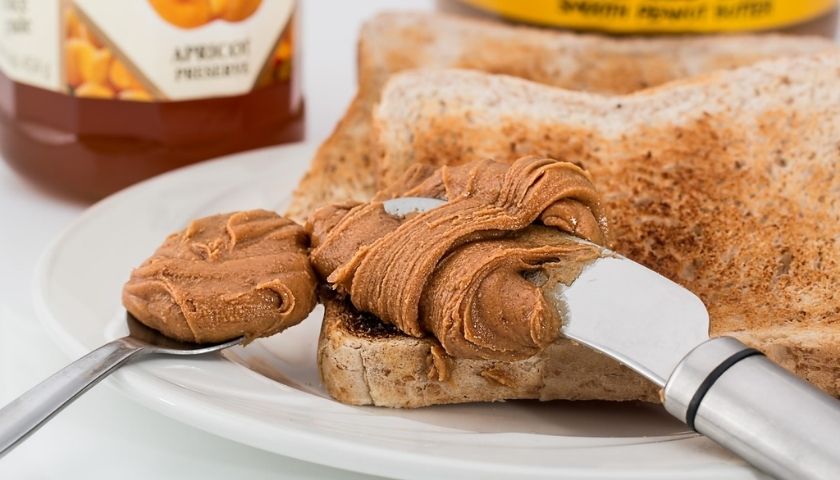How to Remove Musty Odor from Carpet | 7 Effective Methods
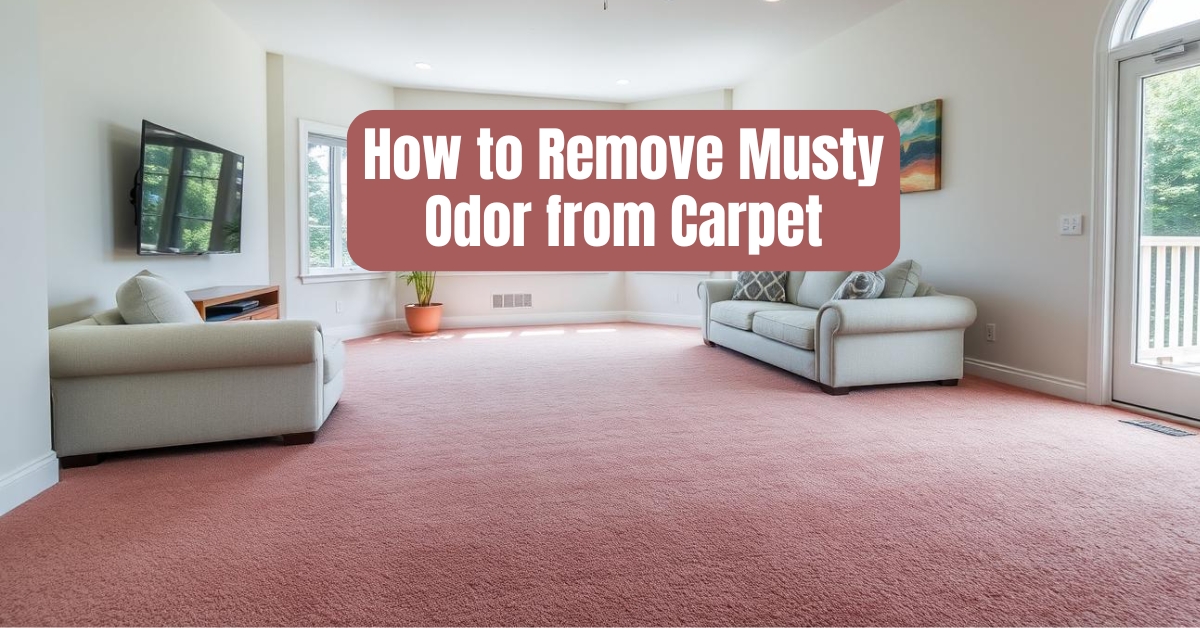
As an Amazon Associate I earn from qualifying purchases.
That unmistakable musty smell coming from your carpet isn’t just unpleasant – it could signal a more serious issue affecting your home’s air quality and your family’s health. Carpets develop musty odors primarily due to moisture problems, mold growth, and poor ventilation.
When moisture gets trapped in carpet fibers or underlayment, it creates the perfect environment for mold and mildew to thrive, resulting in that characteristic musty smell that can permeate your entire home.
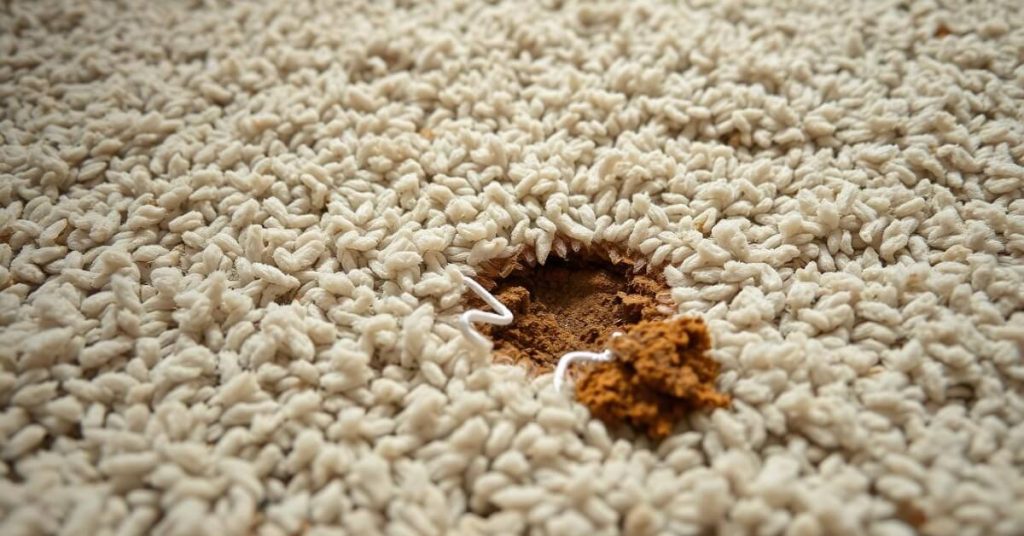
Contents
Why Your Carpet Develops Musty Smells
Understanding why your carpet smells musty is the first step toward effectively eliminating the odor. Several factors contribute to that unpleasant smell:
- Excess moisture: Spills, flooding, high humidity, or water leaks can all introduce moisture to your carpet.
- Poor ventilation: Inadequate airflow prevents carpets from drying properly after cleaning or exposure to moisture.
- Mold and mildew growth: These fungi thrive in damp environments and release spores that cause musty odors.
- Carpet padding: The underlayment beneath your carpet can trap moisture and harbor mold growth.
- Pet accidents: Urine and other pet messes can seep deep into carpet fibers and padding, creating persistent odors.
Before You Start: Essential Preparation
Before tackling that musty carpet odor, make sure you have the right tools and take proper precautions:
Materials You’ll Need
- Vacuum cleaner with HEPA filter
- Baking soda
- White vinegar
- Spray bottles
- Clean cloths or paper towels
- Hydrogen peroxide (3%)
- Enzyme cleaner
- Activated charcoal
- Fans or a dehumidifier
Safety Precautions
- Wear gloves when handling cleaning solutions
- Ensure good ventilation while cleaning
- Test cleaning solutions on an inconspicuous area first
- Keep children and pets away from treated areas
- Consider wearing a mask if you have respiratory issues
The most important first step is to make sure the carpet is completely dry before attempting any odor removal methods. If your carpet is still damp, focus on drying it thoroughly first using fans, dehumidifiers, or natural ventilation.
Method 1: Baking Soda and Vacuuming
Baking soda is a natural deodorizer that neutralizes odors rather than just masking them. This method is safe for most carpets and is particularly effective for mild to moderate musty smells.
- Step 1: Thoroughly vacuum the carpet to remove surface dirt and debris.
- Step 2: Generously sprinkle baking soda over the entire carpet surface. For stronger odors, use more baking soda.
- Step 3: Gently work the baking soda into the carpet fibers using a soft brush or broom.
- Step 4: Let the baking soda sit for at least 24 hours. The longer it sits, the more odor it will absorb.
- Step 5: Thoroughly vacuum the carpet to remove all the baking soda.
Method 2: White Vinegar Solution
White vinegar is highly effective at killing mold and mildew that cause musty odors. Don’t worry about the vinegar smell – it dissipates as it dries, taking the musty odor with it.
- Step 1: Mix equal parts white vinegar and warm water in a spray bottle.
- Step 2: Lightly spray the solution onto the carpet. Be careful not to oversaturate.
- Step 3: Allow the solution to sit for 30-60 minutes.
- Step 4: Blot the area with clean towels to remove excess moisture.
- Step 5: Allow the carpet to dry completely, using fans if necessary.
- Step 6: Once dry, vacuum the carpet thoroughly.
| Vinegar Type | Effectiveness | Odor Duration | Best For |
| White Vinegar | High | 24-48 hours | General musty odors, mold |
| Apple Cider Vinegar | Medium | 48-72 hours | Light odors only |
| Cleaning Vinegar | Very High | 24-36 hours | Severe musty odors |
Method 3: Enzyme Cleaners for Organic Stains
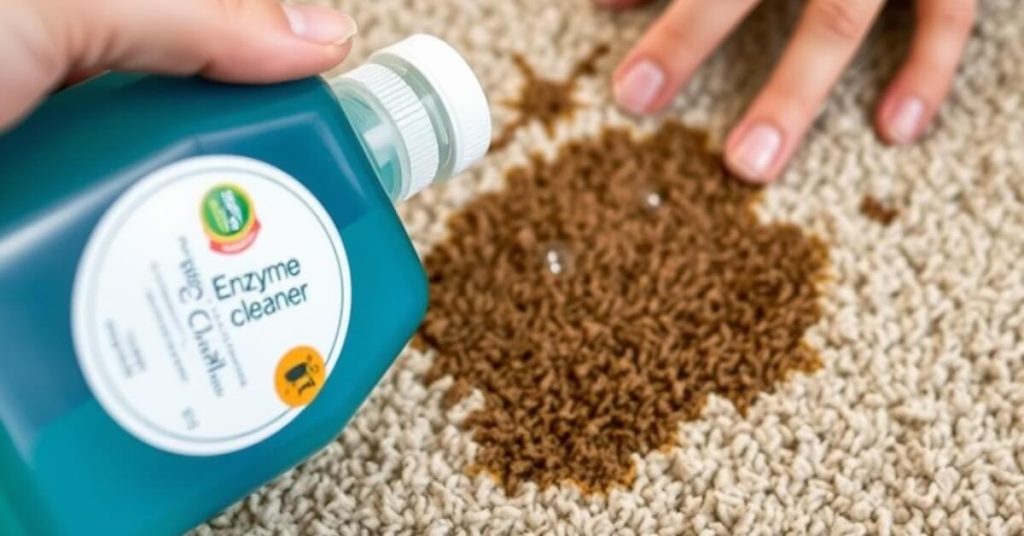
Enzyme cleaners are particularly effective for musty odors caused by organic materials like pet accidents, food spills, or bodily fluids. These cleaners contain beneficial bacteria that produce enzymes to break down organic matter.
- Step 1: Vacuum the carpet thoroughly to remove surface debris.
- Step 2: Apply the enzyme cleaner according to the manufacturer’s instructions, typically by spraying directly onto the affected area.
- Step 3: Allow the enzyme cleaner to sit for the recommended time (usually several hours or overnight).
- Step 4: Blot the area with clean towels if needed, but many enzyme cleaners can be left to air dry.
- Step 5: Once completely dry, vacuum the carpet thoroughly.
Method 4: Steam Cleaning
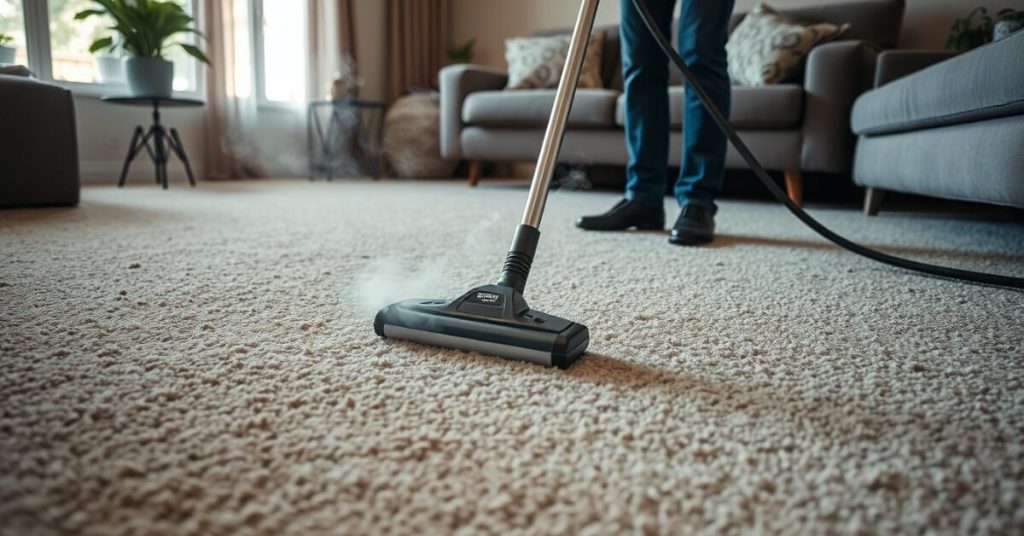
Steam cleaning uses hot water extraction to deep clean carpets and remove embedded dirt, allergens, and odor-causing bacteria. This method is particularly effective for widespread musty odors throughout the carpet.
- Step 1: Vacuum the carpet thoroughly to remove loose dirt and debris.
- Step 2: Fill the steam cleaner with water and the appropriate cleaning solution (follow the manufacturer’s instructions).
- Step 3: Operate the steam cleaner slowly over the carpet, making sure to overlap passes.
- Step 4: Make a second pass with just water to rinse out the cleaning solution.
- Step 5: Allow the carpet to dry completely, which may take 24-48 hours.
- Step 6: Once dry, vacuum the carpet thoroughly.
Pros of Steam Cleaning
- Deep cleans beyond surface level
- Removes embedded dirt and allergens
- Kills most bacteria and dust mites
- Effective for whole-room treatment
- No harsh chemicals needed
Cons of Steam Cleaning
- Requires specialized equipment
- Long drying time (24-48 hours)
- Risk of over-wetting the carpet
- May not be suitable for all carpet types
- Can push moisture deeper if not done properly
Method 5: Sunlight Exposure
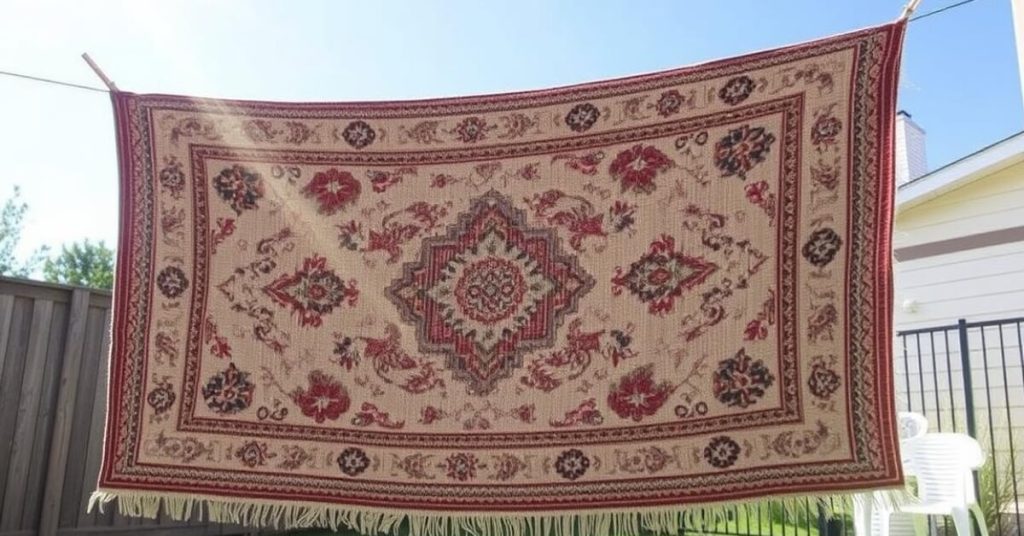
UV rays from sunlight naturally kill mold, mildew, and bacteria that cause musty odors. This method works best for smaller area rugs or carpet sections that can be moved outdoors.
- Step 1: On a sunny, dry day, move the area rug or carpet section outdoors.
- Step 2: Hang the rug over a clothesline or railing, or lay it flat on a clean, dry surface.
- Step 3: Leave the rug in direct sunlight for 3-6 hours, flipping it halfway through if laid flat.
- Step 4: Brush or vacuum the rug before bringing it back indoors.
Method 6: Activated Charcoal Absorption
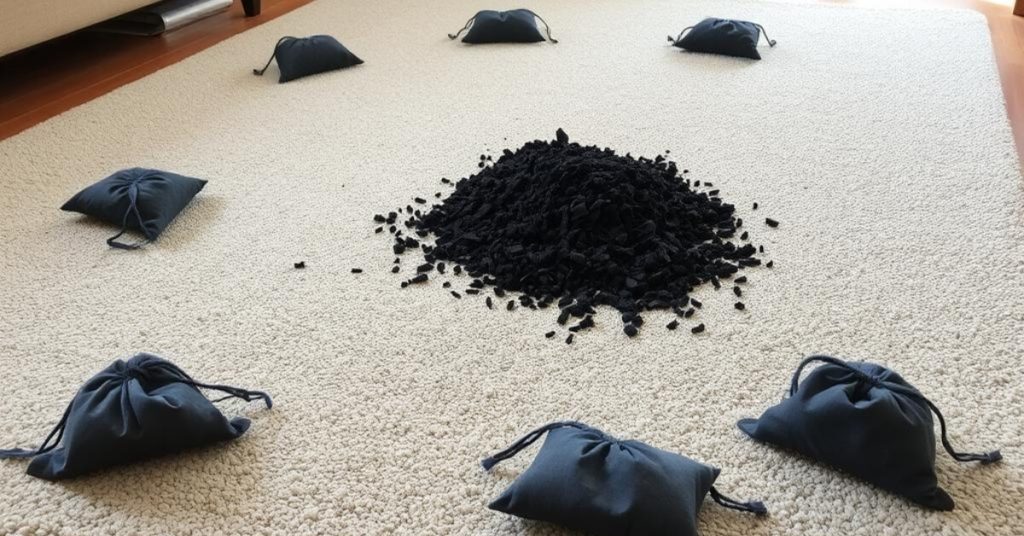
Activated charcoal is highly porous and excellent at absorbing odors and excess moisture from the air. This method is particularly useful for ongoing musty smell prevention or for areas where the source of the odor is difficult to pinpoint.
- Step 1: Purchase activated charcoal odor absorbers or make your own by placing activated charcoal in breathable fabric pouches.
- Step 2: Place several charcoal pouches around the room with the musty carpet, focusing on corners and areas with the strongest odor.
- Step 3: Leave the charcoal in place for 24-48 hours, or longer for persistent odors.
- Step 4: Replace the charcoal every 1-3 months for continued odor control.
“Activated charcoal is one of the most effective natural odor absorbers available. Unlike air fresheners that mask odors, charcoal actually removes the odor molecules from the air.”
— Dr. Michael Peterson, Environmental Health Specialist
Method 7: Professional Odor Removal Services
When DIY methods aren’t enough, professional carpet cleaning and odor removal services can tackle even the most stubborn musty smells. Professionals have specialized equipment and commercial-grade products that can reach deep into carpet fibers and padding.
- Deep extraction cleaning: Professionals use powerful equipment to inject cleaning solution deep into the carpet and extract it along with dirt and odors.
- Specialized deodorizers: Commercial-grade products that neutralize odors at the molecular level.
- Antimicrobial treatments: Prevent future mold and mildew growth.
- Carpet padding replacement: In severe cases, professionals can replace the padding underneath without replacing the entire carpet.
- Industrial-strength drying equipment: Ensures carpets dry quickly and completely.
Prevention: Keep Musty Odors from Returning
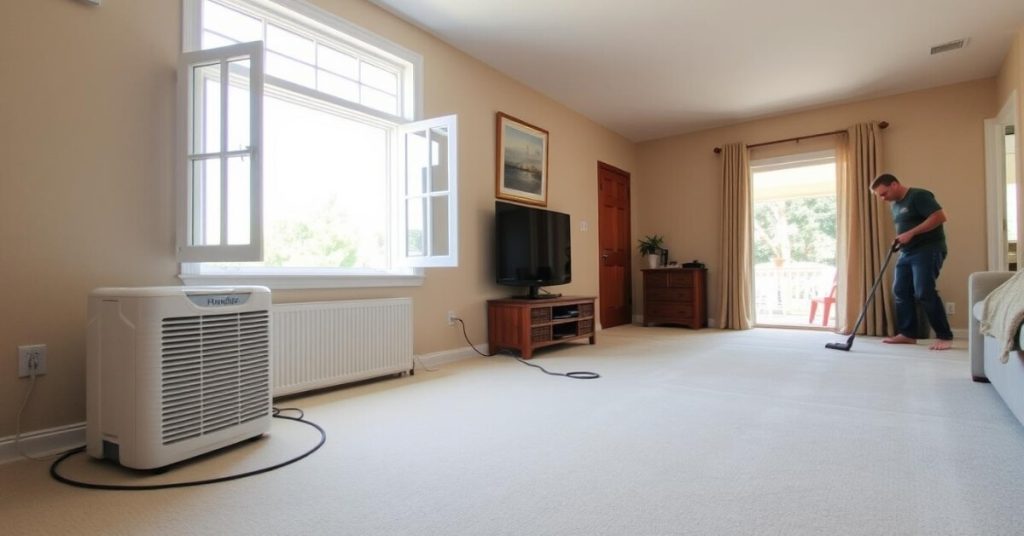
Once you’ve successfully removed the musty odor from your carpet, take these preventive measures to keep it from coming back:
Control Moisture
- Use dehumidifiers in humid areas
- Fix any water leaks promptly
- Ensure proper ventilation
- Use exhaust fans in bathrooms and kitchens
Regular Maintenance
- Vacuum at least twice weekly
- Professional cleaning every 12-18 months
- Address spills immediately
- Use entrance mats to reduce dirt
Air Quality
- Open windows regularly
- Use air purifiers with HEPA filters
- Change HVAC filters regularly
- Consider carpet materials that resist mold
Before and After: What to Expect
| Aspect | Before Treatment | After Treatment |
| Odor | Strong musty smell that worsens in humidity | Neutral or fresh scent with no mustiness |
| Appearance | Possible discoloration or visible mold | Restored color, no visible mold or mildew |
| Air Quality | Stuffy, heavy air with possible allergens | Cleaner air with reduced allergens |
| Health Effects | Possible allergic reactions, respiratory issues | Reduced symptoms, improved comfort |
| Moisture Level | Damp or humid carpet and padding | Completely dry carpet and padding |
Frequently Asked Questions
Is a musty carpet dangerous?
Yes. Musty smells often mean mold or mildew, which can trigger allergies, asthma, and breathing issues, especially for kids, the elderly, or those with weak immunity.
How long does odor treatment last?
If the moisture problem is fixed, treatment can last a long time. But if moisture returns, so will the smell. Keep things dry to prevent it.
Can I use bleach to remove musty smells?
No. Bleach can damage carpets and doesn’t reach deep enough. Use carpet-safe cleaners instead.
Will replacing the carpet padding help?
Yes. If smells persist, the padding may be the problem. Replacing it can remove trapped mold and odors.
How do I know if the smell is from the carpet?
Sniff different spots on the carpet, especially near walls. If it’s strongest there, the carpet is likely the source. If not, check for leaks or damp walls.
Conclusion
Removing musty odors from your carpet not only improves the smell and appearance of your home but also contributes to a healthier indoor environment. By understanding the causes of musty carpet odors and implementing the appropriate treatment methods, you can effectively eliminate these unpleasant smells and prevent their return.
Remember that persistent moisture issues may require professional intervention, especially if you suspect mold growth beneath your carpet. Don’t hesitate to consult with carpet cleaning professionals if DIY methods aren’t providing the results you need.
As an Amazon Associate I earn from qualifying purchases.



